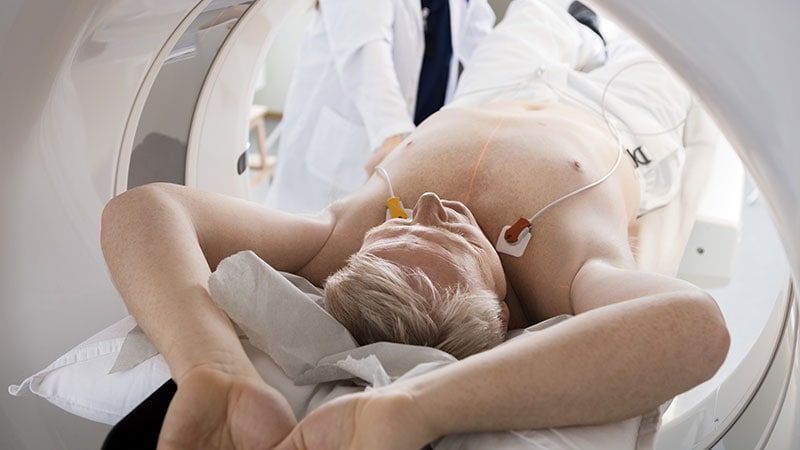CT Imaging in Myositis for Cancer Screening Strategies
Core Concepts
Targeted cancer screenings in idiopathic inflammatory myositis (IIM) based on subtype, autoantibodies, and age can enhance cancer detection while reducing false positives.
Abstract
In a study at Johns Hopkins University, researchers found that CT imaging for cancer screening in patients with IIM can be optimized by considering subtype, autoantibodies, and age. The diagnostic yield was highest in dermatomyositis patients with the anti-TIF1γ autoantibody. Screening patients under 40 years old resulted in lower diagnostic yields and more false positives, regardless of subtype. The study aims to provide data-driven insights into efficient cancer assessment approaches for newly diagnosed IIM patients.
Key Highlights:
Study conducted at Johns Hopkins University
Highest diagnostic yield in dermatomyositis patients with anti-TIF1γ
Lower diagnostic yields and higher false positives in patients under 40
Lack of research on efficient assessment approaches for IIM patients
Importance of data-driven insights in cancer screening strategies
CT Results in Myositis Inform Cancer Screening Strategies
Stats
"The diagnostic yield (number of cancers detected/tests performed) was highest in patients with dermatomyositis and the autoantibody anti-TIF1γ."
"Patients below age 40 years had lower diagnostic yields and higher false positives, regardless of subtype."
Quotes
"There has been a lot written about how these patients should be evaluated for cancer. Unfortunately, the majority of literature is based on eminence."
"Age was a really big deal in terms of predicting diagnostic yield and false positivity rate."
Key Insights Distilled From
by Lucy Hicks at www.medscape.com 03-24-2023
https://www.medscape.com/viewarticle/990121
Deeper Inquiries
How can the findings of this study impact current cancer screening guidelines for patients with IIM
The findings of this study can significantly impact current cancer screening guidelines for patients with IIM by providing valuable insights into optimizing screening strategies. Targeting screenings based on IIM subtype, autoantibodies, and age can help maximize cancer detection while minimizing false positives. For instance, the study revealed that patients with dermatomyositis and the autoantibody anti-TIF1γ had the highest diagnostic yield when screened for cancer via CT imaging. By incorporating these factors into screening protocols, healthcare providers can tailor screenings to be more effective and efficient. This personalized approach can lead to earlier cancer detection, improved patient outcomes, and potentially reduce unnecessary testing and anxiety associated with false positive results. Overall, the study's findings have the potential to enhance the precision and efficacy of cancer screening guidelines for patients with IIM.
What are the potential drawbacks of targeting cancer screenings based on subtype, autoantibodies, and age
While targeting cancer screenings based on IIM subtype, autoantibodies, and age can offer benefits in terms of maximizing cancer detection and minimizing false positives, there are potential drawbacks to consider. One drawback is the risk of overlooking certain patient populations who may not fit the specified criteria but still have an increased risk of cancer. By focusing solely on specific subtypes, autoantibodies, and age groups, there is a possibility of missing out on detecting cancers in individuals who do not fall within these categories. Additionally, relying solely on these factors for screening may lead to a false sense of security, as not all cancer cases may present with the expected markers. It is essential to strike a balance between targeted screening and ensuring comprehensive evaluation for all patients with IIM to avoid missing potential cancer diagnoses. Healthcare providers should consider these limitations when implementing screening guidelines based on subtype, autoantibodies, and age to ensure thorough and inclusive care for all patients.
How can the study's emphasis on data-driven insights be applied to other areas of medical research
The study's emphasis on data-driven insights can serve as a valuable model for applying evidence-based approaches to other areas of medical research. By utilizing real data to inform clinical decision-making, researchers can enhance the validity and reliability of their findings. This approach can help bridge the gap between theoretical knowledge and practical applications in various medical fields. Researchers in other areas can adopt similar methodologies to analyze patient outcomes, treatment efficacy, and disease progression, leading to more informed and targeted interventions. Incorporating data-driven insights can also aid in identifying trends, patterns, and correlations that may not be apparent through traditional research methods. Ultimately, the study's emphasis on data-driven insights underscores the importance of evidence-based medicine in guiding clinical practice and shaping future research directions across different medical disciplines.
0
More on Medical Research
